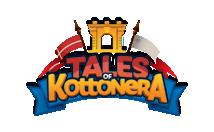


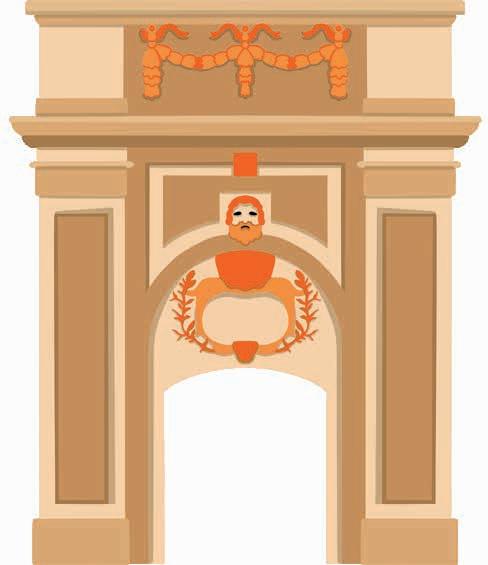
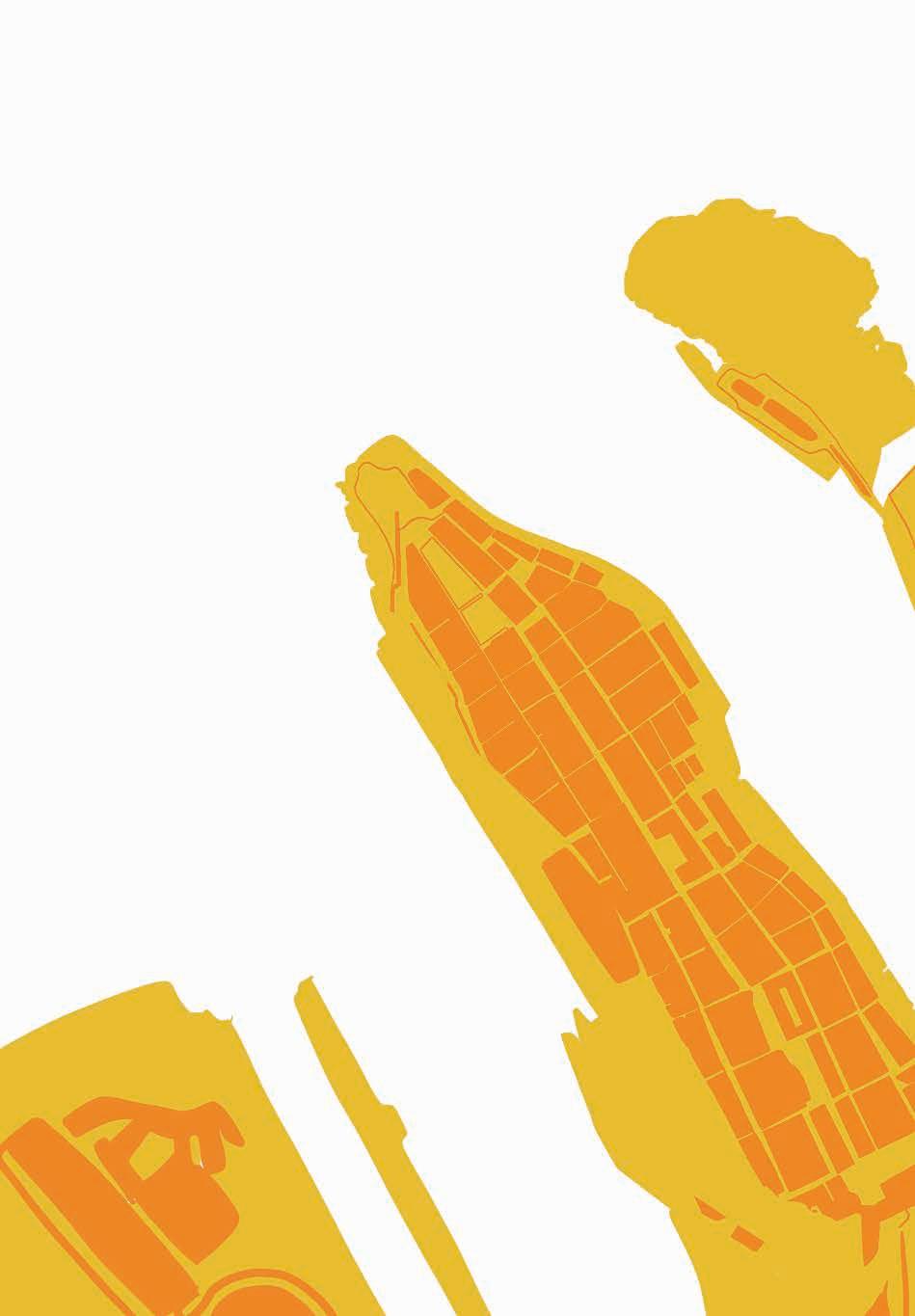






Step into the past and uncover the secrets of Birgu, the Knights’ stronghold before Valletta, and the city that defied the Great Siege of 1565! This immersive heritage trail takes you through 21 exciting stops—explore grand palaces, hidden gates, and formidable forts. Solve fun challenges, follow the Tales of Kottonera characters, and scan QR codes to reveal incredible stories. Once Malta’s maritime capital, Birgu’s rich history is waiting to be discovered.
Are you ready to crack the mysteries of Città Vittoriosa? Adventure awaits!
DURATION: ~2 HOURS
STARTING POINT: ADVANCE GATE
ENDING POINT: VITTORIOSA SQUARE
CONCEPT & COORDINATION
Godwin Vella
EDITING
Fiona Vella
AUTHORSHIP
George Agius & Warren Bugeja
DESIGN & LAYOUT
Cherise Micallef
TECHNICAL SUPPORT
Kimberly Azzopardi, Kevin Farrugia & Chilion Mangion
ISBN 978-9918-627-18-9
PRODUCTION
Heritage Malta Publishing
PRINTING
Bonnici Press Ltd
PRODUCED BY HERITAGE MALTA PUBLISHING
© 2025 Heritage Malta. All rights reserved in all countries. No part of this book may be reproduced or utilised in any form or by any means without the prior written permission of the publisher and respective authors.

Advance Gate is one of three consecutive gates constructed to strengthen the fortifications of Birgu (also known as Vittoriosa) in the 18th century, commissioned by Grand Master Manoel de Vilhena (1722-1736) and designed by the architect and military engineer Charles François de Mondion.

Fejn sabu s-Sinjur
FUN FACT!
A STOLEN CIBORIUM FULL OF CONSECRATED HOSTS WAS FOUND UNDER THE BRIDGE LEADING TO ADVANCE GATE, NOW KNOWN AS FEJN SABU S-SINJUR.
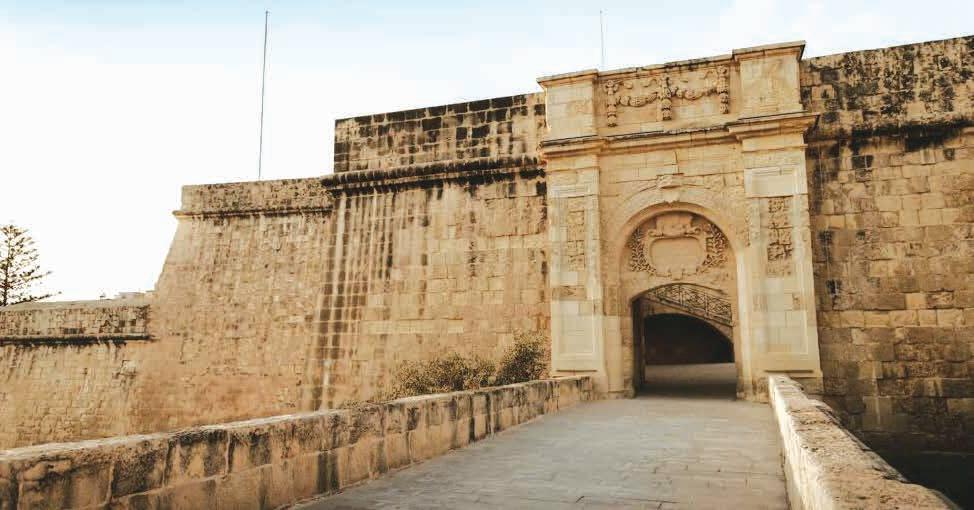
Couvre Porte means ‘hidden gate’. In the eventuality that the enemy entered Advance Gate, it found itself exposed to fire from the ramparts of Couvre Port.
Imagine you are a soldier who has just discovered that the coats of arms were removed. Act out your reaction and take a short video or picture!
If you were the enemy, there was one more gate you had to fight your way through before you entered the city proper.
CHALLENGE!
Come up with a motto of your own for these three gates and translate it into Latin.
You are standing in front of Advance Gate also known as the ‘Gate of Aragon,’ after the Langue of Knights who manned this section of the bastions. Look up at the stone carvings of the two cannon above the entrance. You will find the date when the construction of this gate was completed in Roman numerals.
1. Convert it to modern numbers:
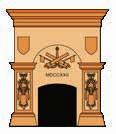
Now walk towards Couvre Porte, the second gateway.
2. Under which foreign rule were the coats of arms removed from this gate? Circle the correct answer:
i. The Order of St John
ii. The French
iii. The British

Make your way to the Main Gate or the Gate of Provence, as it was also known. Above the doorway, there is a sentence in Latin taken from Psalm 139 in the Bible that means, ‘You have overshadowed (protected) my head in the day of battle.’
3. Fill in the blanks: Obumbrasti super ___________ meum in Belli.

The street sign recalls a major disaster that occurred in the first years of British rule, when a magazine containing approximately 18,000kg of gunpowder exploded and killed as many as 200 people.
Learn more about the Polverista disaster here
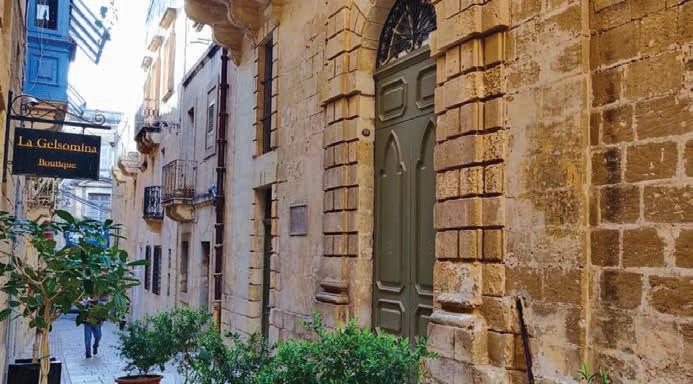
The Università, or Council of Jurors, played a vital role in ensuring the local population had access to essential goods, particularly grain. Established in 1538, it was formed after a dispute between the ruling Grand Master and the Mdina Jurors.
In the past, Kottonera was one of the renowned localities from which prominent people emerged. Among these, two of Birgu’s sons had in their hands the civil and religious leadership of the Maltese Islands.

Learn more about Sir Paul Boffa here
Make up a two-sentence ‘news headline’ about Sir Paul Boffa’s biggest achievement
Pass through Main Gate. You are now on Triq Pawlu Boffa. Look across at the street sign on your left, which reads ‘Triq il-Vittmi tal-Polverista’.
4. Write down the date on which this accident occurred. _______
Walk down Triq il-Mina l-Kbira and take the second street on your right, Triq il-Kunsill Popolari. In this street, you will encounter a sizeable building with a large door, which in the past served as the office of the Birgu Università (the name of the local government at the time of the Order of St John). Look for the answers to the following questions on the façade.
5a. Under which Grand Master was this Università established?
5b. Under which British Governor did this Università stop functioning?
Turn left and walk down Triq Papa Alessandru VII. Turn left again into Triq il-Lunzjata (the lower part of Triq il-Palazz tal-Isqof). Find the house where Sir Paul Boffa was born.
6a. Who was Sir Paul Boffa?
6b. Write down the door number in Triq il-Lunzjata where he was born
The name of this street takes its name from the Church and adjacent Convent dedicated to the Annunciation. About 500 years ago, the first group of friars from the Mendicant Dominican Order came to live in this Friary. Despite this, the Church and Friary buildings that we see today were built after the Second World War.
Learn more about the Church of the Annunciation here:
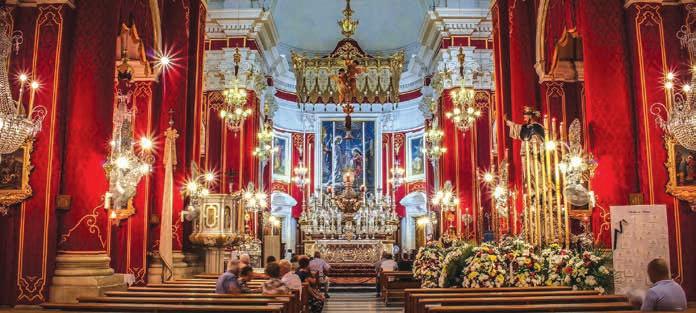

TWO OF THE INQUISITORS WHO SERVED IN MALTA EVENTUALLY BECAME POPES.
The Roman Inquisition was established in 1542 to counter Protestantism and strengthen the Catholic faith. Until 1575, its arm in Malta was under the responsibility of the Bishop. Then, Pope Gregory XIII appointed an additional ecclesiastic independent of the Bishop to serve as Inquisitor and Apostolic Delegate. The inquisitors operated from this Palace until the abolishment of the same office shortly before the French invasion in 1798.
One of you is a suspect being questioned by the Inquisitor, while the other plays the strict judge. Act out a short scene and record a 10-second video!

Learn more about the Inquisitor’s Palace here
On the corner of these two streets, one finds the house of the executioner. This was the person responsible for the executions of capital punishment, which were sometimes carried out in Birgu square.
Executioner’s mark: Draw a quick sketch of the symbols you see.


Listen to the Inquisitor’s servant, Salvu, for some gossip

THE NAMES OF THESE STREETS CORRESPOND TO THE POINTS OF THE COMPASS AND HELP VISITORS TO BIRGU TO ORIENT THEMSELVES. ‘TRAMUNTANA’ MEANS ‘NORTH’ IN ENGLISH, WHILST ‘NOFSINHAR’ MEANS ‘SOUTH’.
Walk down Triq il-Lunzjata towards Triq il-Mina l-Kbira. On the bell tower of this church, opposite the exit of Triq il-Lunzjata, you will find the answer to the following question:

7. In which year did the Dominican friars come to Birgu? ______________
8
Now keep walking down Triq il-Mina l-Kbira.
8a. Who are the caretakers of this Palace today?______________
8b. Fill in the blank: Today, this Palace is a historic house museum and the National Museum of
Turn right into Triq Nofsinhar and walk straight for a while before turning right onto Triq Papa Alessandru VII. You will find yourself behind the Inquisitor’s Palace. Continue walking until you reach the intersection with Triq Paċifiku Scicluna on your left.
9. Look up at the symbols carved above one of the windows. What do they represent? _________________________________________________________
The Bishop’s Palace is situated in the street which is named after it. This building dates to the 16th century and was built during Bishop Domenico Cubelles’ tenure (1541-1566).

Learn more about why Bishop Gargallo, one of the bishops who lived here, rebelled against the Pope and was excommunicated

The street is named after one of Malta’s most famous ecclesiastics. He intervened in political affairs and was instrumental in encouraging Gozitan farmers to put their hoarded grain on the market in the Second World War.

Learn more about this controversial Archbishop here
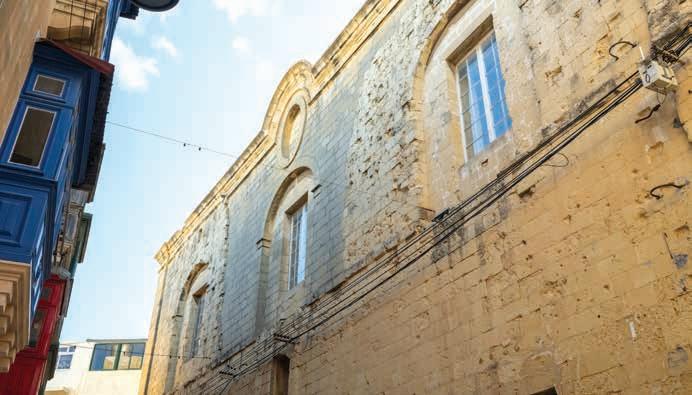
The old Armoury is one of Birgu’s largest buildings. One of its sides stands on Triq l-Arċisqof Mikiel Gonzi. Built in the 16th century by the Order of St John as an armoury, it has four doors—one on each side—for easy access.
Continue walking down Triq Papa Alessandru VII and turn left again into Triq il-Palazz tal-Isqof.
10a. In which year was the Bishop’s Palace built?
10b. Apart from the Palace in Birgu, where do you think the two other palaces of the Bishop of Malta are located? _________________
Keep walking up Triq il-Palazz tal-Isqof, and turn right until you find yourself in Triq l-Arċisqof Mikiel Gonzi.
11. Find the house where Archbishop Gonzi was born and write down his date of birth. The answer can be obtained from the plaque next to the house
12. What was this building converted into during the British Occupation?
After the Order of St John came to Malta in 1530, the walls of Fort St Angelo were strengthened, and Birgu’s defences started being built. These proved to be crucial during the Great Siege of 1565. Each of the eight Langues of the Order was responsible for defending and maintaining a section of these walls.
Recreate a battle stance as if you’re defending the breach in 1565. Bonus points if you make it look dramatic!


Learn more about the
Luckily the greater part of this area, known to the Knights of St John as the ‘Collachio’, was not destroyed during the Second World War. All the Auberges of the Knights, except for that of Italy, were located here. Each Langue had its own auberge, which, among other things, served as a temporary residence for the Knights of that Langue.

Learn More about Santa Skolastika here
The Sacra Infermeria was a hospital run by the Order of St John, which was founded to care for the sick in the Holy Land. Even after leaving Jerusalem, the Order continued its medical work, and its hospital was among the best in Europe.
If you were a patient in the Sacra Infermeria, what ailment would you have, and what cure would they prescribe? Make up a creative answer!
Walk to the end of this street and turn left below an archway down the steps to Triq il-Foss tas-Sur. Find a small piazza with benches in it, known as the Post of Castille. On the bastions, there is a marble plaque commemorating an event linked to Grand Master Jean de Valette (1557-1568) during the Great Siege in August 1565.
13. What happened to de Valette on that day?
Admire the view and walk down Triq il-Foss. Turn into Trid id-Dejqa until you get to Triq Hilda Tabone opposite you.
14. Write down the name of one of the auberges which could be found in Triq Hilda Tabone.
FUN FACT!
HILDA TABONE WAS A FAMOUS SOPRANO WHO WAS BORN IN BIRGU. THIS STREET WAS ONCE THE LIVELIEST IN THE CITY, WITH OVER 20 STORES.
At the end of Triq Hilda Tabone, turn right into Triq Santa Skolastika.
15a. What did the Sacra Infermeria become years after it was moved to Valletta? ____________________________
15b. Which famous Italian artist painted the altar piece of the church we find on this site? ________________
SAUCY STORIES! SCAN HERE FOR SOME GOSSIP ABOUT THE SCANDALOUS PAST OF THIS BUILDING.


In July 1565, during the Great Siege, 700 soldiers from Sicily arrived with weapons to support the defenders. Known as the Piccolo Soccorso, they entered Birgu through a hidden gate (Sally Port) by the water.
The road you find yourself on did not exist and has been reclaimed from the sea. Once, there was a secret passage which was used to carry wounded soldiers up to the Sacra Infermeria. Later, you will encounter another Sally Port on your left, built by the British.

NEAR THE BLOCK OF APARTMENTS, YOU CAN JUST MAKE OUT THE ARCH OF A CAVE, NOW OBSTRUCTED BY THE RECLAIMED LAND, WHERE THE KNIGHTS’ PAGES USED TO SWIM.
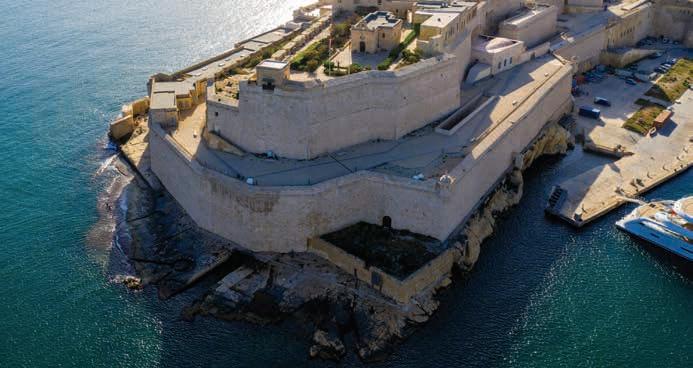

Learn more about Fort St Angelo here
Birgu likely gets its name from ‘borgo’, meaning suburb, as it began as a settlement near Castrum Maris, now Fort St Angelo—the first fortress in the Grand Harbour. The Order of St John built the bastions we see today. On 31 March 1979, the British Forces left this fort, marking their final departure from Malta.
Walking down Triq il-Miratur (next to the Sacra Infermeria), you will pass a window (on your left) which leads down to the crypt where the nuns were buried. At the end of the street, turn left and go through the Sally Port to reach the sea.
16 What is the Sally Port referred to by locals today? Ask a local.
17
Continuing in the direction of Fort St Angelo, past the Birgu Regatta club, you will notice a block of modern apartments. These replaced the Slaves’ Prison. Now, go through the passage in front of the apartments to get to the Menqa or Manderaggio. This is a ditch filled with seawater, which sheltered some of the smaller seacraft belonging to the Knights.
17. Why do you think this ditch was dug? ________________________________ BIRGU’S CITADEL
18
Proceed up the stairs towards the entrance of Fort St Angelo.
18. From the marble plaque above the doorway, write the surname of the military engineer who made the plans for the fort as it appears today. Carlos _________________
Birgu’s shore, now called Triq l-Assedju l-Kbir 1565, has long been a key maritime centre. One standout building is the Royal Naval Bakery, designed by William Scamp and built between 1842–1845. It replaced the Order’s old shipbuilding arsenal and became a museum in 1992.

Learn more about the Maritime Museum here
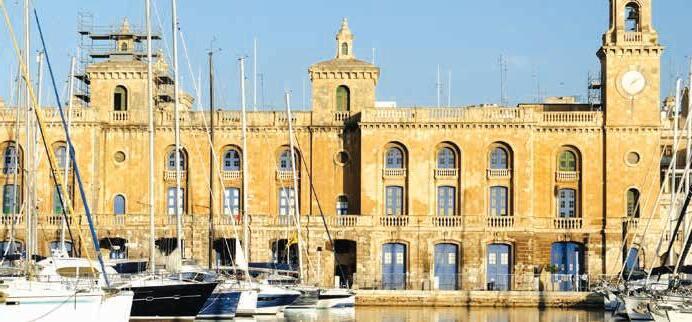
The present Parish Church of Birgu, dedicated to St Lawrence the Martyr, was founded on 11 May 1681 by Bishop Miguel Jeronimo Molina (1682-1698) and was officially inaugurated on 10 August 1697. It sustained some damage during the Second World War.
How would you insert yourself into the group of statues on the hill?

Learn more about the Church of St Lawrence here
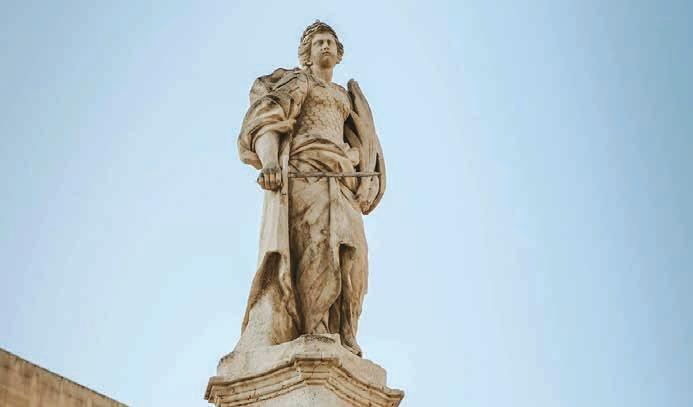
Draw two of the symbols on the railing of the monument
In the past, this square was called Piazza D’Armi. On 10 August 1798, the French set up the Liberty Pole here. Before the Second World War, the tallest building was a 40-metre-high watchtower, later turned into a clock tower in 1629. Sadly, it was destroyed by an airstrike in 1942 and never rebuilt. Luckily, two elegant monuments in the square survived the war.
Cross the bridge once more and walk along Birgu’s waterfront to the far end.
19. What symbol can you see on the weathercock at the top of the clock tower?
Architect’s Eye: Find and sketch an interesting architectural detail on the ex-Royal Naval Bakery.
Exit the archway past the ex-Royal Naval Bakery, and turn on your left.
20a. Who was the architect of this Church? The answer can be found on the plaque next to the main door.
20b. Right in front of the Church of St Lawrence, there is a large monument. Which event does this monument commemorate?
FUN FACT!
ST LAWRENCE CHURCH WAS THE ORDER OF ST JOHN’S FIRST CONVENTUAL CHURCH IN MALTA FOR AROUND 41 YEARS UNTIL 1571.
Next to St Lawrence Church, a flight of stairs on your left leads to two oratories: the Oratory of the Holy Crucifix and the Oratory of St Joseph. Continue walking up the stairs, and you will reach Vittoriosa Square, the final stop on our heritage trail.
21a. Which event is being commemorated by the monument with the statue of Victorious Malta?
21b. Look at the railing that surrounds the monument. Write down two of the symbols that can be seen on it.


Experience Kottonera—Malta’s historic maritime heart—through four engaging heritage trails, perfect for all ages, whether as a fun family outing or a solo adventure. For centuries, the fortified towns of Isla, Bormla, Birgu, and Kalkara have stood strong, shaped by Knights, sailors, and shipbuilders who met many cultures in these bustling creeks.
Step into history with the Isla Trail (1), where mighty ramparts, maritime legends, and a miraculous statue tell the story of the undefeated city. Continue to Bormla (2), winding through medieval alleyways, windmills, and churches that have survived wars and reinvention. Walk through Birgu (3), the Knights’ first stronghold, exploring grand palaces, hidden gates, and sites of heroic defiance during the Great Siege of 1565. End with the Kalkara Trail (4), a scenic route past sentinel forts, historic cemeteries, and film-set locations in this charming coastal village.
Follow the Tales of Kottonera characters, uncover clues, scan QR codes, crack fun challenges, and unlock the secrets of these exciting neighbourhoods.
History, adventure, and discovery await—are you ready to explore?



Step into the past and uncover the secrets of Birgu, the Knights’ stronghold before Valletta, and the city that defied the Great Siege of 1565! This immersive heritage trail takes you through 21 exciting stops—explore grand palaces, hidden gates, and formidable forts. Solve fun challenges, follow the Tales of Kottonera characters, and scan QR codes to reveal incredible stories. Once Malta’s maritime capital, Birgu’s rich history is waiting to be discovered.
Are you ready to crack the mysteries of Città Vittoriosa? Adventure awaits!

